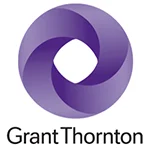"The financial communications industry will need to evolve more quickly with changes to the media and investment landscape, as other segments of communications have,” said Michael Fox, Chief Client Officer at ICR.
|
|
Fox believes Millennials’ transition into a target audience for financial communicators will become a major source of impact for the industry in the coming years.
|
|
“Digital media is simultaneously expanding and fragmenting into many more outlets for information, presenting new challenges and opportunities for companies in the way they communicate to their current and potential stakeholders,” said Fox. “The way Millennials consume information and the things that influences their behavior are very different — and financial communicators will have to adapt.”
“One need only look at the recent challenges faced by United Airlines this past year to understand the true value of corporate brand reputation,” said Andy Merrill, Partner at New York-based financial firm Prosek Partners.
Merrill said that as the value of protecting brands and leveraging them to drive the business grows, so too will the demand for strategic financial communications services.
|
|
“As that demand grows, our clients are challenging us to open, develop and build new and innovative communications channels to deploy their corporate narrative, differentiate and promote their brand and, ultimately, support the continued growth of their business,” he said.
The impact of regulations
Meg Wildrick, Managing Partner at Bliss Integrated Communication, said that her firm has discovered that new regulations — being it in banking, tax, investing, reporting or fiduciary rules — actually create as many communications opportunities they do challenges.
“Like technological change, regulatory change spurs companies to seek out new business models, distribution channels and customer groups,” says Wildrick.
Wildrick said Bliss, whose clients consist of a mix of established players and disruptors, is seeing requests for an increasingly diverse array of services: everything from content to traditional media relations, to social media and lead generation.
|
|
The agency accounted for more than $3.9 million in finance-related net fees last year.
“Ten years ago, regulated companies were slow to implement social media and content marketing programs,” Wildrick said. “Today, it’s rare to find a financial services company that isn’t sharing content actively on owned and social channels.”
Digital, social communication essential
Mike Boccio, Executive Managing Director at RF | Binder Partners and Bill McBride, Senior Advisor, told O’Dwyer’s that an adoption of new technologies has led to a proliferation of content sharing and consumption across digital and social platforms, which presents both significant opportunities and challenges for the financial communications industry.
“Today, target audiences and constituencies including investors and shareholders are paradoxically as interconnected as ever, yet also highly fragmented — and they are becoming less reliant on traditional resources and modalities to inform their longer-term investment strategies, daily decision-making and overall perception of brands,” Boccio said. “As a consequence, communications campaigns must be always on, fully integrated across channels and measurable to enhance efficacy.”
|
|
Richard Dukas, Chairman and CEO of Dukas Linden Public Relations, said he’s witnessed a massive reallocation of assets from active investors, everything from mutual funds to passive index funds like the SPDR 500, an ETF that closely tracks the S&P 500 index.
As baby boomers begin reaching retirement age, Dukas said we’ll simultaneously begin to witness the largest generational transfer of wealth in our country’s history.
In a low interest rate environment, cheaper index funds will tend to outperform active managers. Markets don’t go up forever, but active managers will need to work harder to convince the investing public of the value they offer despite their steeper costs, and alternative managers will need to do a better job communicating the true value these funds provide to a skeptical public and media.
|
|
“Hedge funds and other alternative asset classes have generally under-performed compared to plain, ‘vanilla’ index funds, such as the SPDR 500,” Dukas said. “These index funds and ETFs are far less expensive than hedge funds, private equity and other alternative asset classes. Now more than ever, mutual fund companies and active managers need to communicate the value they offer investors, especially over the longer term.”
“Boomers and larger institutional investors, such as pension and endowment funds, as a general rule, aren’t comfortable receiving information about investing from social media,” Dukas continued. “However, the industry will need to grapple with the challenge of how to communicate to a more tech-savvy Millennial and GenY demographic, which is more comfortable with social media.”


 Michael Fox
Michael Fox Andy Merrill
Andy Merrill Meg Wildrick
Meg Wildrick Mike Boccio
Mike Boccio Richard Dukas
Richard Dukas
 Teneo is handling the initial public offering of CVC Capital Partners, one of Europe’s largest private equity firms with nearly $200B in assets under management.
Teneo is handling the initial public offering of CVC Capital Partners, one of Europe’s largest private equity firms with nearly $200B in assets under management. Brunswick Group represents Endeavor Group Holdings as it agrees to go private via its acquisition by Silver Lake technology investment firm, which is handled by Edelman Smithfield.
Brunswick Group represents Endeavor Group Holdings as it agrees to go private via its acquisition by Silver Lake technology investment firm, which is handled by Edelman Smithfield. Tod Donhauser, a nine-year veteran of Edelman, has joined H/Advisors Abernathy as managing director and head of its San Francisco office.
Tod Donhauser, a nine-year veteran of Edelman, has joined H/Advisors Abernathy as managing director and head of its San Francisco office. Intelligent Group Ltd, a Hong Kong-based financial PR firm, has priced its initial public offering of 1.9M shares at $4, which is the low end of the $4 to $5 range.
Intelligent Group Ltd, a Hong Kong-based financial PR firm, has priced its initial public offering of 1.9M shares at $4, which is the low end of the $4 to $5 range. Kekst CNC represents Grant Thornton as it sells a majority stake in its US arm to New Mountain Capital, which relies on Goldin Solutions, in what is billed as the largest PE investment in the accounting and advisory sector.
Kekst CNC represents Grant Thornton as it sells a majority stake in its US arm to New Mountain Capital, which relies on Goldin Solutions, in what is billed as the largest PE investment in the accounting and advisory sector.


 Have a comment? Send it to
Have a comment? Send it to 
No comments have been submitted for this story yet.